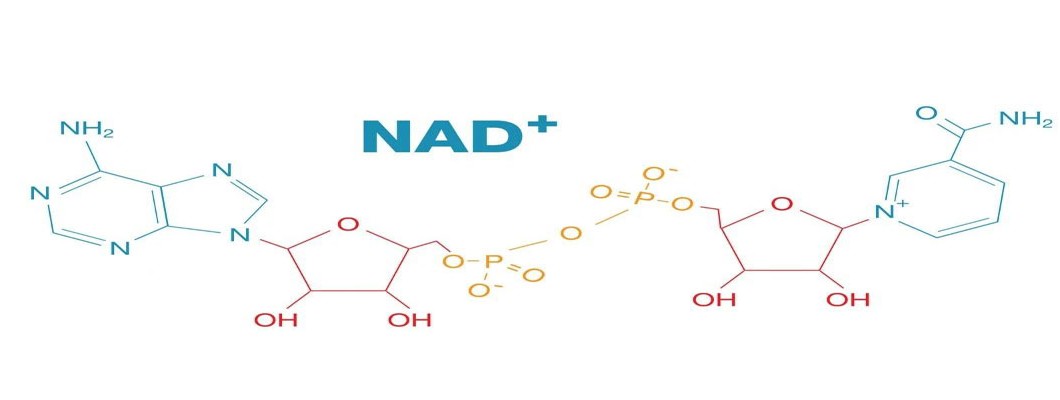
Seit der Entdeckung von NAD+ im Jahr 1906 ist das Molekül für die Wissenschaft von Interesse, da es im Körper reichlich vorhanden ist und eine Schlüsselrolle in den molekularen Abläufen spielt, die den Körper am Laufen halten.1940 und 1950 haben Studien über NAD+ gezeigt, dass es eine Schlüsselrolle sowohl bei der DNA-Replikation als auch bei der RNA-Transkription spielt, zwei Prozessen, die für das Leben unerlässlich sind.1 In Tierversuchen hat die Erhöhung des NAD+-Spiegels im Körper ermutigende Ergebnisse in Forschungsbereichen wie Stoffwechsel und altersbedingte Krankheiten gezeigt, und es hat sogar einige Anti-Aging-Eigenschaften gezeigt.
NAD+ (Nicotinamid-Adenin-Dinukleotid) ist eine für das Funktionieren des Körpers unentbehrliche Substanz, die in allen Zellen vorhanden und an Tausenden von physiologischen Reaktionen im Körper beteiligt ist. Als Teilnehmer des Stoffwechsels und als Hilfsmolekül für andere biologisch aktive Proteine besteht seine Aufgabe vor allem darin, die Zellen mit Energie zu versorgen, die Immunität zu stärken und die Reparatur und Regeneration des Gewebes zu beschleunigen, um so den Körper gesund zu erhalten und seine Alterung zu verlangsamen.
NAD+ wird von vielen Proteinen im Körper verwendet, wie z. B. den Silencing-Regulat-Proteinen, die beschädigte DNA reparieren, und ist auch wichtig für die Mitochondrien, die das Kraftwerk der Zelle sind und die chemische Energie produzieren, die der Körper benötigt.
NAD + hilft bei der Kontrolle von DNA-Schäden
Wenn Organismen altern, kann ihre DNA durch Umweltfaktoren wie Strahlung, Umweltverschmutzung und ungenaue DNA-Replikation geschädigt werden.
Im Jahr 1963 entdeckten Chambon, Weill und Mandel, dass NMN (Nikotinamid-Mononukleotide) die Energie liefert, die zur Aktivierung wichtiger Nukleasen erforderlich ist. Diese Entdeckung führte unmittelbar zur vollständigen Offenlegung der Funktion der PARPs, die eine entscheidende Rolle bei der Reparatur von DNA-Schäden und der Regulierung des Zelltods spielen und deren Aktivität mit Veränderungen der Lebensspanne in Verbindung gebracht wird.
Nach den derzeitigen Theorien des Alterns ist die Anhäufung von DNA-Schäden die Hauptursache für das Altern. PARP (Poly(ADP-Ribose)-Polymerase) ist ein wichtiges DNA-Reparaturprotein, das für seine Funktion auf NAD+ angewiesen ist.
Eine Erhöhung des NAD+-Spiegels ermöglicht es den PARP-Proteinen, geschädigte DNA effektiver zu reparieren, was wiederum die Alterung verlangsamt.
PARP1 ist der "Vermittler" für die DNA-Reparatur
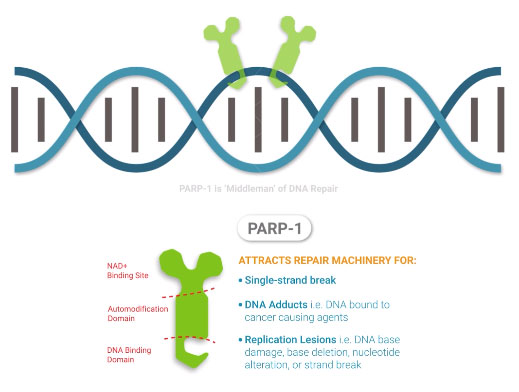
Schematische Darstellung von PARP1, das bei der Reparatur beschädigter DNA hilft
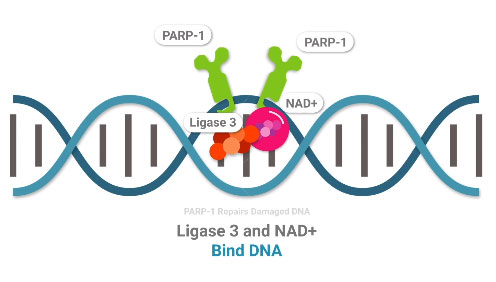
NMN-Umwandlung in NAD +
Im Laufe der Zeit nimmt die Konzentration von NAD+ im Körper jedoch nur allmählich ab und kann nicht durch direkte Zufuhr erhöht werden, da NAD+ aufgrund der Barriere der Zellmembranen nicht ohne weiteres in den Körper gelangen kann.
Als direkter Vorläufer von NAD+ ist NMN ein kleineres Molekül als NAD+ und kann effizienter in die Zellen aufgenommen werden und gilt als Schlüsselkomponente zur Erhöhung der NAD+-Konzentration in den Zellen.
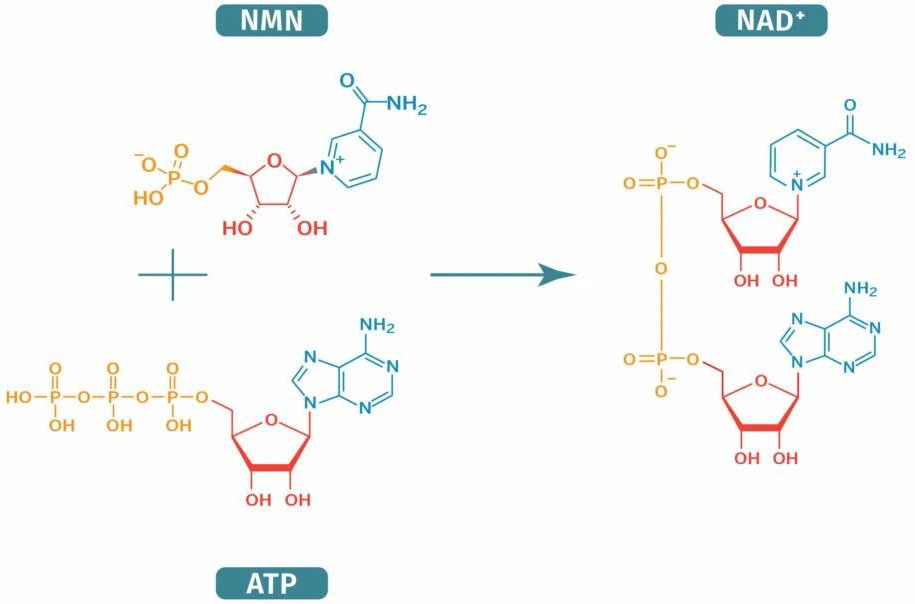
Nach jahrelangen klinischen Versuchen wurde nachgewiesen, dass oral eingenommenes NMN den NAD+-Spiegel innerhalb von 15 Minuten rasch erhöhen kann.
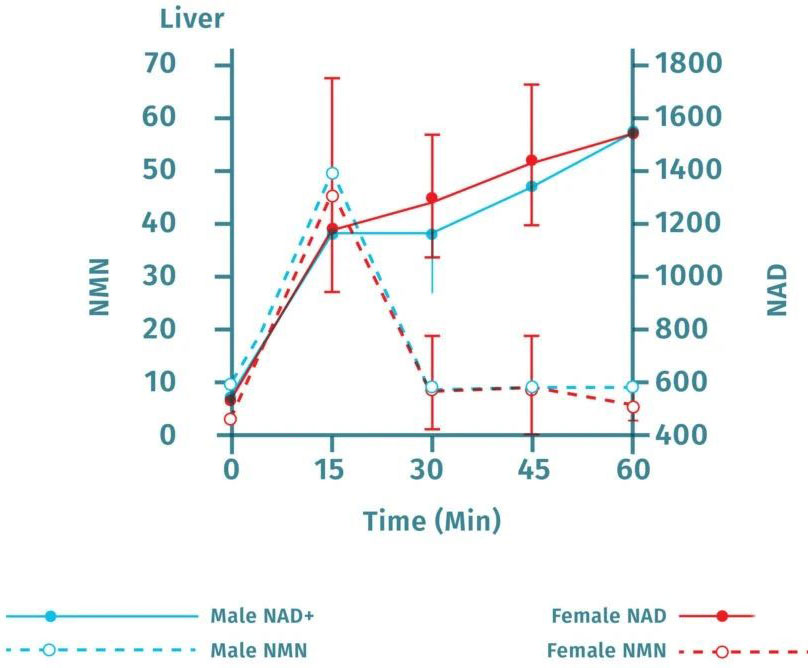
Im Jahr 2013 wies ein Team um Professor David Sinclair von der Harvard Medical School nach, dass die einwöchige orale Verabreichung von NMN an 22 Monate alte Mäuse den NAD+-Spiegel erhöhte und wichtige biochemische Indikatoren im Zusammenhang mit der mitochondrialen Homöostase und der Muskelfunktion wieder auf das Niveau junger Mäuse im Alter von sechs Monaten brachte, wie in der Zeitschrift Cell veröffentlicht wurde.
Wie der Genetiker und NMN-Forscher David Sinclair sagt, verlieren wir mit zunehmendem Alter NAD+, und "man nimmt an, dass der daraus resultierende Rückgang der Zellaktivität der Hauptgrund dafür ist, dass unser Körper im Alter Krankheiten entwickelt, in der Jugend aber nicht". Er glaubt, dass eine moderate Erhöhung des NAD+-Spiegels den Alterungsprozess verlangsamen oder teilweise umkehren kann.

Kommentar hinterlassen